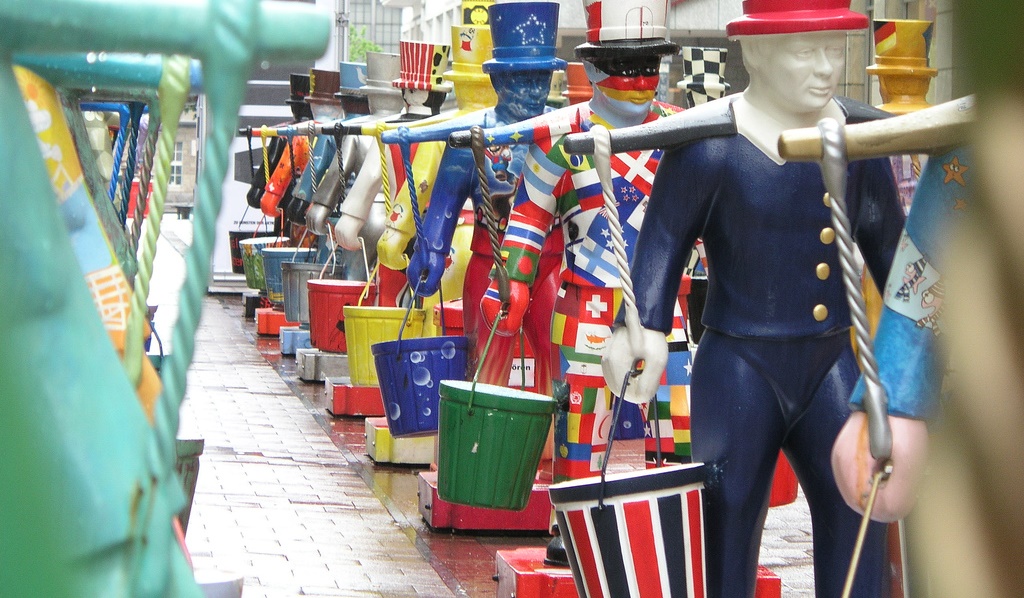Hamburg has a well-deserved reputation as Germany’s Gateway to the World. It is the country's biggest port, despite being located astride the River Elbe, some 100 kilometers from the North Sea.
Hamburg is also Germany's second largest city with a population of over 1.8 million and the Greater Hamburg Metropolitan Region has a population of over four million. Hamburg is proud of its status as a "Free and Hanseatic City" and thus shares the same status as a province, making up one of Germany's 16 federal-states.
Hamburg’s heart – the harbor
Around 9,000 ship calls per year, almost 300 berths and a total of 43 kilometers of quay for seagoing vessels, more than 2,300 freight trains per week, four state-of-the-art container terminals, three cruise terminals and around 50 facilities specialized in handling roro and breakbulk and all kinds of bulk cargoes, along with about 7,300 logistics companies within the city limits – these are just a few of the factors making the Port of Hamburg to one of the world's most flexible, high-performance universal ports. 138.2 million tons of cargo crossed the quay walls of Germany's largest seaport in 2016. That included around 8.9 million standard containers (TEU). Hamburg is accordingly the third largest container port in Europe and in the 17th place on the list of the world's largest container ports.
Hamburg is also one of the most important media hubs in Germany. Half of the nation's newspapers and magazines have their roots in Hamburg. And, with one of the Airbus aircraft assembly plants, Hamburg is a major location of the world's aerospace industry, right after Seattle (USA) and Toulouse (France)!
The mercantile background is reflected in the city's architecture. The most notable palace in Hamburg is the town hall, which houses the citizens’ parliament and the senate. Apart from that, the city has a few impressive mansions in public parks and still has large quarters with expensive houses and villas. These residences were home to merchants and captains, surrounded by lots of greenery. Large parts of the city were destroyed during the devastating air raids of World War II, particularly the port and some residential areas, killing tens of thousands and leaving more than a million homeless, yet much of historic value has been preserved, although not as much as people would have wished for, as like many German cities, it’s cursed by unsightly post war buildings and office blocks.
Hamburg still keeps its tradition of being an open, yet discreet city. Citizens of Hamburg, just like most Northern Germans, may appear to be quite reserved at first. Once they get to know with whom they are dealing, they'll be as warm and friendly as you'd wish.
Wasserträger Statue
'Hummel, Hummel!' 'Mors, Mors!' is the most popular salute in Hamburg. Unveil the secret of Hamburg's mysterious saying.
Before the local water system was introduced in Hamburg in 1848, Wassertragen (lit. carrying water) was a popular profession. One of these water carriers became a famous symbolic figure for the city. He was originally born as Johann Heinrich Bentz on January 21st, 1787, but people called him Hans Hummel instead. Nobody's exactly sure, but historians assume that Bentz got his nickname by moving into the apartment of soldier Daniel Christian Hummel after his death. The real Hummel was much-loved by the kids in the streets for his adventurous war stories.
The same kids then made fun of the new 'Hummel' by yelling at him 'Hummel, Hummel' as they saw him passing by with his filled buckets. Some of them even showed him their naked butts, well-knowing that 'Hummel' couldn't chase them with his heavy load. Allegedly, he therefore just replied by yelling back 'Mors, Mors!' which means 'Kiss my butt!' in a local dialect called Plattdeutsch.
Sadly, the water carrier Hummel lost his job in 1848 and died in a poorhouse six years later. But ever since, the phrase 'Hummel, Hummel', 'Mors, Mors!' has been a popular salute in Hamburg.
Hamburg used to be home to many colorful Hummel sculptures that were spread all over the city. This outdoor exhibition took place until 2006, when most of the artworks were sold. The proceeds were donated to homeless people in Hamburg. Nowadays, a few Hummel figures still can be found around the city, i.e. close to the City Hall.
